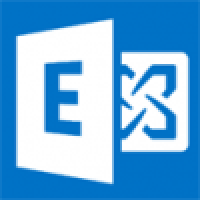
Latest Version
15.02.1118.007
December 10, 2023
2019 CU11 Build 15.02.0986.005
Microsoft
Windows
2.0 GB
82
Full (Activated)
More about this program
Microsoft Exchange Server 2019 Overview
Exchange
Server 2019 requires Windows Server 2019. In fact, it is recommended installing
Exchange Server 2019 onto Windows Server 2019 Server Core. Exchange Server 2019
installed on Windows Server 2019 Core provides the most secure platform for
Exchange. You also have the option of installing Exchange 2019 onto Windows
Server 2019 with Desktop Experience.
When
customers can try it out, Exchange Server 2019 is said to run better on
multi-core systems with plenty of memory. Microsoft said the new Exchange can
use up to 48 processor cores and 256 gigabytes of RAM.
Exchange Server 2019 can also cache data on solid-state storage for fast
access. It will also allocate more memory to active database copies when
cacheing data, for improved performance.
Database failovers are faster in Exchange Server 2019, using Bing-based search
technology and overall, Microsoft promises that the new version of its
communications platform can handle more users per server than before.
On the security side, Microsoft has cleaned out old ciphers and hashing
algorithms and Exchange Server 2019 will only use the Transport Layer Security
1.2 protocol out of the box, which might restrict support for legacy systems.
Features Of Exchange Server 2019:
Security:
Exchange Server 2019 requires Windows Server 2019. In fact, we recommend
installing Exchange Server 2019 onto Windows Server 2019 Server Core. Exchange
Server 2019 installed on Windows Server 2019 Core provides the most secure
platform for Exchange. You also have the option of installing Exchange 2019
onto Windows Server 2019 with Desktop Experience, but we have worked hard to
make sure running Exchange on Server Core is the best choice for our code.
We’re aware all media for Windows Server 2019 and Windows Server, version 1809
has been temporarily removed and Microsoft will provide an update when
refreshed media is available. Exchange Server 2019 will be fully compatible
with version 1809, and the refreshed version.
We also built Exchange Server 2019 to only use TLS 1.2 out of the box, and to
remove legacy ciphers and hashing algorithms. To understand how this affects
coexistence with earlier versions, please reference our previous series of
posts on TLS.
Performance:
We’ve done significant work to allow Exchange Server to take advantage of
larger core and memory packed systems available in market today. With our
improvements, Exchange Server can use up to 48 processor cores and 256GB of
RAM.
We’ve re-engineered search using Bing technology to make it even faster and
provide better results, and in doing so have made database failovers much
faster, and administration easier.
We’re adding dual storage read/write capabilities to Exchange Server 2019 using
Solid State Drive (SSD) technology to provide a super-fast cache of key data
for improving end user experience. We also talked about this in our Email
Search in a Flash! Accelerating Exchange 2019 with SSDs session at Ignite.
We also changed the way database caching works to allocate more memory to
active database copies, again improving the end user experience. You can learn
more about Dynamic Database Cache from Welcome to Exchange Server 2019! video
and slides.
The improvements we have made to Exchange Server 2019 will enable you to scale
to a larger number of users per server than ever before, use much larger disks,
and see the latency of many client operations being cut in half.
End user experience:
We all rely on Exchange for calendaring, and we know large enterprises are
heavy calendar users. We are bringing a few key features such as restricting
the forwarding of meeting requests and better control over OOF settings to
Exchange Server 2019. Administrators get some new calendaring features too, as
we’re adding the ability to manage events on user’s calendars and assign
delegate permissions more easily.
System Requirements and Technical Details
Supported
OS: Windows Server 2019 Standard or Datacenter
CPU: 64-bit processors
Memory Varies depending on Exchange roles that are installed:
• Mailbox: 128GB minimum recommended
• Edge Transport: 64GB minimum recommended.
Note that Exchange 2019 has large memory support (up to 256 GB)
Disk space • At least 30GB of free space on the drive where you're installing
Exchange.
Rate the Program
User Reviews
Popular Programs

























